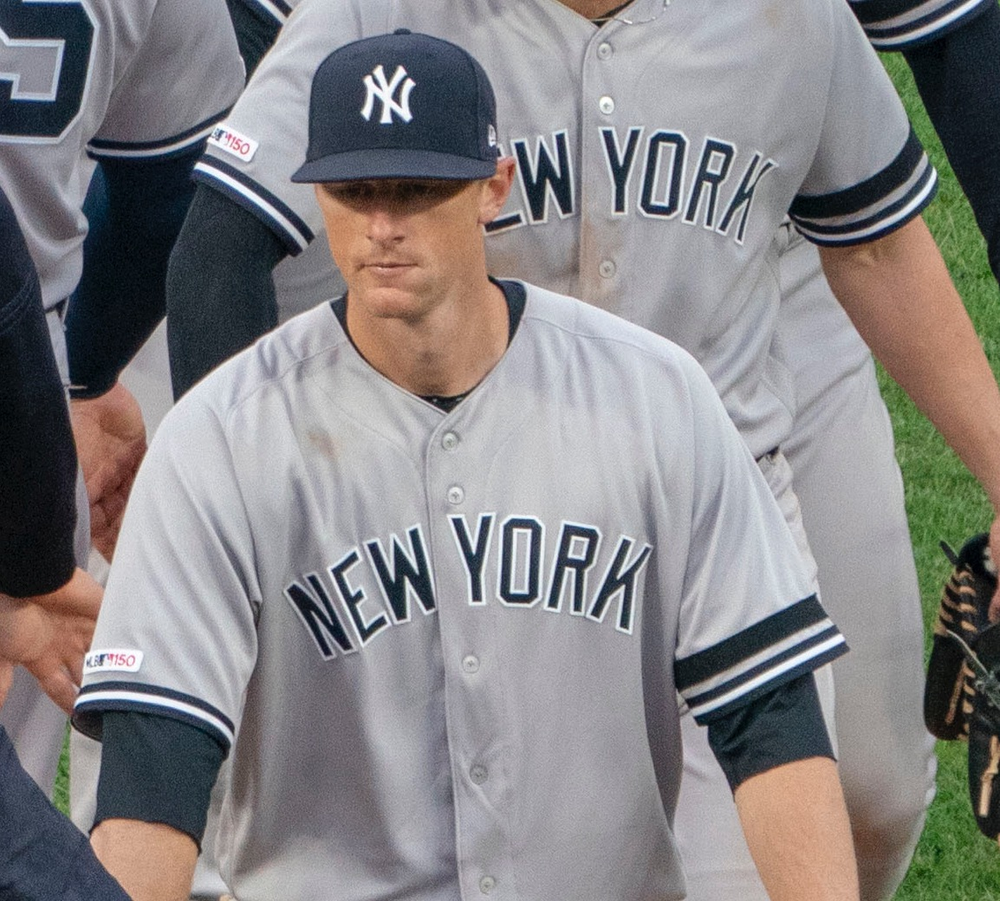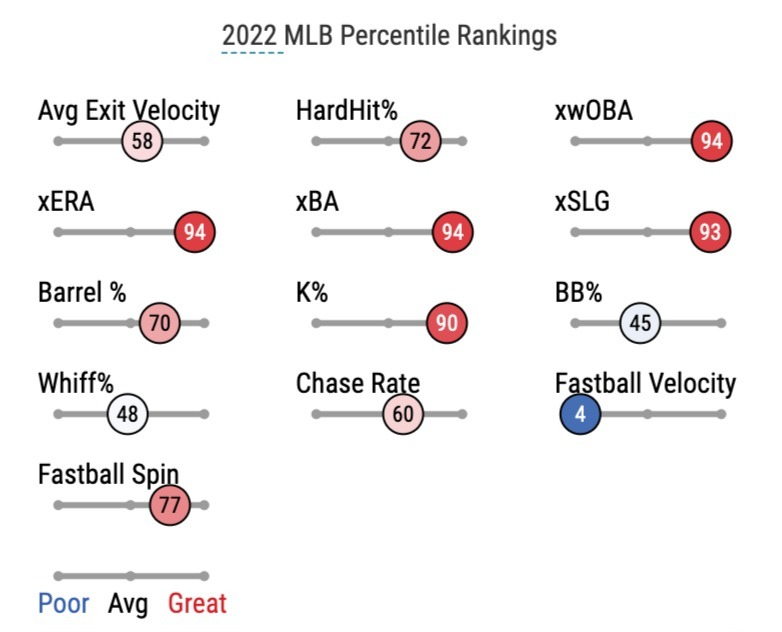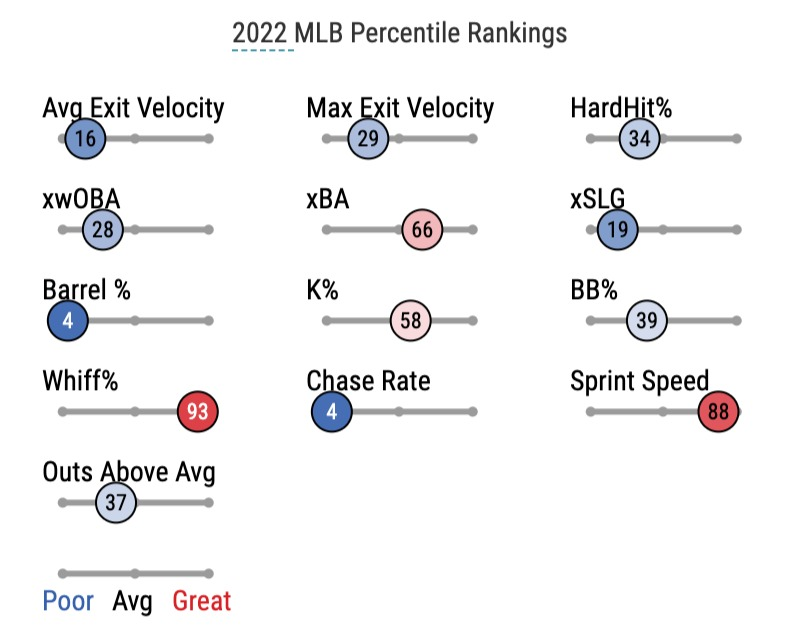C
Clark Romig
Guest

By Keith Allison - This file was derived from: New York Yankees celebrate victory over Baltimore Orioles 4-4-19 (40573828853).jpg
What is going on in the Bronx? If you would have told me before the season that the Yankees would be on top of the American League with 20 wins - ahead of the Blue Jays and Rays - I would have said that you were crazy. Last year, the Yankees played below-average defense and suffered from a lackluster offense that struggled to plate runs.
Somehow, they have flipped the script after one offseason in which they did not bring in any major free agents. They were rumored to be in talks with nearly every star, but, like last year, they swung and missed on big names like Freddie Freeman, Carlos Correa, and Trevor Story. Anthony Rizzo seemed like the safe and unassuming signing when it came to addressing their first base void. Luke Voit clearly wasn’t the answer, being that he could not stay healthy and offered too much swing and miss in a lineup that was top 6 in strikeouts. In the offseason, they traded him for a pitching prospect.
Additionally, they acquired Josh Donaldson and Isiah Kiner-Falefa, who I will talk about later. But I want to examine whether this newfound success is just a hot start or points to success for the rest of the season.
I could start with the biggest names and give you a bland analysis about how the superstars will continue to be great, but that doesn’t offer too much insight. Instead, I focused on two starters, two relievers, and two hitters who have been crucial to their short-term success.
It is hard to think of the Yankees right and not mention Nasty Nestor Cortes. He is arguably the most fascinating pitcher in baseball not named Shohei Ohtani or Brett Phillips. Nestor diving headfirst into first base showed a new level of hustle that I did not know existed. Unfortunately, though, I believe that his hot start to this season is just that - a hot start and not something sustainable. I do think he has the upside to be a solid number 3 in that rotation. But his numbers currently outshine Gerrit Cole, who is being paid $36 million to be one of the top pitchers in the league.
Nestor’s pitching line is gross; he rocks a 1.41 ERA and 0.969 WHIP. But if you dig into his numbers, especially on his baseball savant page, you will find some things that are worrisome. His 58th percentile average exit velocity shows that guys he is, at best, only average at limiting hard contact when batters put the bat on the ball. If opponents are having high exit velos and not scoring or getting hits, it suggests an element of luck, usually in the sense that the ball is being hit at a player. Nestor definitely benefits from the dead balls, and he has a great defense behind him. Both of those factors are likely to prevent hard-hit balls from dropping for hits, significantly boosting Nestor’s numbers. Additionally, he has a slightly below-average walk, whiff, and chase rate, which hints that he is struggling with control and does not have wipeout stuff. Watching Nestor makes me think back to when Johnny Cueto first started varying his timing with different windups on the 2015 Royals. The inability to time Nestor’s delivery, in my opinion, is why he is accruing his current volume of strikeouts. He only throws 91 in a league where most of the starters are sitting mid-90s. Nestor is great. But I do think he is overperforming, and these numbers point towards a regression over the course of the season.

Former ace Luis Severino is finally healthy again. There is no hiding the fact that he has experienced a slow start, but I think he is in store for a strong performance throughout the rest of the season. It has been two years since Luis pitched meaningful innings at the big-league level. Before his injury, he was a workhorse who did not give up many runs. In 2017, he threw 193.1 innings with a 2.93 ERA and followed it up in 2018 with a 3.39 ERA over 193.1 innings. The guy can deal. Currently, he has a 4.08 ERA over 28.2 innings pitched, but I anticipate those numbers to come down as he regains his feel for the majors. According to his Baseball Savant percentiles, he is in the 85th percentile in exit velocity, which means batters are not hitting the ball hard off him. This is unusual for a pitcher who throws hard, and Severino currently sits in the 80th percentile for fastball velocity. One would expect a hard thrower to have a poor percentile ranking on average exit velocity because of the physics behind hitting a ball moving fast; the energy from the fast pitch gets transferred to the ball on the swing, and the hits tend to go further. Sevi has demonstrated that he has ace-like stuff. Many of his advanced stats for the year say he is having one of his worst starts to a season in his career, but I remain optimistic. I see him being an important piece for the Yankees if they want to make a run through the postseason. So, watch for his numbers to come down throughout the rest of the year.

On the other side of the plate is newly acquired infielder Isiah Kiner-Falefa, who was a big offensive contributor to their 10-game winning streak. At the end of the 10-game win streak, he was swinging a hot bat, with a .300 batting average with a .346 on-base percentage. Historically, he is known for his Gold-Glove caliber defense, which is why the Yankees traded for him rather than overpaying for Carlos Correa or Trevor Story. Kiner-Falefa has come back to his normal levels since the end of the win streak, and I think his production is going to continue to decline as he has more plate appearances. Something that jumps out to me is his whiff rate, which is how often he swings and misses at strikes. He is in the 93rd percentile, meaning he makes consistent contact with strikes. Yet he is in the bottom 16th percentile for average exit velocity and the 4th percentile in barrel percentage. None of these stats point towards a guy who is going to be consistent. He chases pitches outside of the zone more frequently than 96% of the league and walks less than 58% of it, so it is not like he is an on-base machine. His 2022 Hits Spray Chart shows that he gets on base via bloopers. He only has singles and doubles on the year, meaning he does not contribute much to the Bronx Bombers offensive philosophy. I am expecting fans to be unhappy with him come the trade deadline, as well as for talks of the Yankees looking for a shortstop to pick back up.

To counter Isiah’s pending regression, DJ LeMahieu, Mr. Consistency, is poised for a strong season. Typically, when we think of DJ, we think of his high batting average and low whiff and chase rates. He has been one of the most consistent hitters in the MLB for the last 5-7 years. But this year, I think he is trying to fulfill the Yankee philosophy of being a Bronx Bomber. His hard-hit rate and expected slugging percentage are both in the 75th percentile, the highest they have been since joining the Yankees. For those who do not remember, his slash line with the Rockies from 2015 to 2018 featured a .309 batting average, a .367 OBP, and a .797 OPS. I only mention these numbers to highlight what I think he is capable of this year. In such a loaded lineup, it is hard to find guys to pitch to. The Yankees have three sluggers at the top of the home run leaderboard in Aaron Judge, Anthony Rizzo, and Giancarlo Stanton. Opposing pitchers are going to be more willing to attack and go after a guy like DJ, who is not known for being a power hitter. As a result, I think he will be able to hunt more first-pitch fastballs and drive them to produce doubles, singles, and RBIs. DJ’s bat is a key piece for the Yankees offense, and arguably one of the most important because of the amount of swing and miss throughout the lineup. His consistency in finding a way to put the ball in play is crucial. Look for DJ to sustain and even progress throughout the season, as we look to see how opposing pitching staffs navigate one of baseball’s best lineups.
On the back end, we have two young guys who have had some incredible outings this year. Clarke Schmidt, the Yankees’ #2 pitching prospect, is back at the big league level, and it looks like he is here to stay. Clarke had the strongest outing of his career against the Detroit Tigers in long relief of Gerrit Cole to get his first win of the 2022 campaign. Where is he now, more specifically when he is not pitching against one of the worst teams in baseball? Well, he has a 1.08 ERA and a .9860 WHIP over 8.1 innings pitched. Yes, I agree; it is a very small sample size. But I think there are some underlying reasons that he is having more success this year. His opponents are slashing half (.148/ .273/.259) of what they have against him in his other stints in the majors (.312/.442/.431). One thing that jumps off the page is that his batting average on balls put in play is significantly lower now (.158) than it was previously (.393). Even his strikeout rate is up, currently at 24.2% versus his previous best of 21.2%. I am concerned, though. Clarke’s walk rate, hard-hit rate, and xERA are making me think that he is overperforming and regression, to an extent, is to be expected. I watched Clarke pitch against the Tigers; the guy has some wipeout stuff. He makes professional hitters struggle to put the bat on the ball on strikes but cannot elicit swings when pitches are not in the zone. All that being said, I like the guy, but I do think we are in store for his numbers to come up a bit.

Now, time for the best reliever you haven't heard of. Clay Holmes, who the Yankees acquired from the Pirates last season, is a two-pitch pitcher who will carve you like a turkey. He literally only throws two pitches, a slider and a sinker. How does this work? Well, both are similar in their spin, but they break or move in opposite directions. A sinker is a downward fastball that tails on the arm side of the pitcher, whereas a slider breaks to the glove side of the pitcher and is virtually unhittable by a right-handed batter. The pitches ended up having a crazy criss-cross effect that buckles hitters. As a result, he has one of the lowest barrel rates in the MLB, 12%. That leads to batters having weak contact, leading to having a -5.7 degree launch angle, which is absolutely wild. That means that most balls are topped by hitters and end up being ground balls. Guys are topping the ball because his sinker has that much movement on it. It drops 24 inches, which is elite in comparison to the league average. In addition, his slider has 9.8 inches of horizontal movement, which is also top tier. Since he has plus stuff, he is in the 80th percentile for whiff rate and 85th percentile for chase rate. I think he is only going to get better. Ever since the Yankees acquired him, his pitch mix has completely changed. The Yankees pitching development has done it again by reinventing him. He is arguably one of the most important arms for their success this year. I am curious to see what his end-of-the-year numbers look like.
So what is the verdict? Is this team a fraud, or is it going to be the hands-down winner of the AL East? I think this team is poised to make a playoff run and has the capability of winning the East, but I do not think it will be a runaway division race come the end of the year. I think hitting numbers will slightly increase as the summer months come along, and the ball starts to carry a little more. I expect the starters' numbers as a staff to improve, but I do think that Nestor Cortes will come back to Earth in terms of his production. As for the relievers, I think the Yankees will have one of the best bullpens in baseball by the end of the season.
Yes, everything I have said in this article could become a freezing cold take. But hey, who knows? The Yankees have a very complete, or seemingly complete, 1 month into the season. Time will be the true measure of how this team fares against a 162-game season after having a shortened spring training.